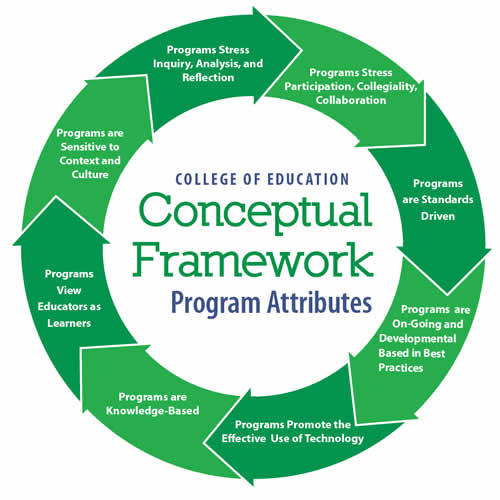Report on Reforming Mathematics Education to Align with Sustainable Development Goals
Executive Summary
An analysis of current mathematics pedagogy reveals a systemic misalignment with the principles of Sustainable Development Goal 4 (SDG 4: Quality Education). The prevailing model, which ties mathematical instruction to a student’s grade level rather than competency, creates learning gaps that disproportionately affect vulnerable students and impede the achievement of equitable and effective learning outcomes. This report examines a proposed shift towards a personalized, competency-based learning model as a strategic approach to address these challenges. This reform directly supports the achievement of SDG 4, as well as SDG 8 (Decent Work and Economic Growth), SDG 9 (Industry, Innovation, and Infrastructure), and SDG 10 (Reduced Inequalities), by fostering a more inclusive, effective, and sustainable educational framework.
Analysis of Current Pedagogical Deficiencies and SDG Impact
The Conflict Between Grade-Level Instruction and Competency
The traditional structure of mathematics education is founded on a sequential, age-based curriculum. This system presents a fundamental conflict with the cumulative nature of mathematical knowledge. When students fail to master foundational concepts, they are nonetheless advanced to the next grade level, where they are expected to learn more complex material. This systemic issue creates a cycle of learning loss and disengagement, which is a direct barrier to achieving key educational targets.
Impediments to Achieving SDG 4: Quality Education
The current model undermines several targets within SDG 4:
- Target 4.1 (Universal Primary and Secondary Education): By systematically creating knowledge gaps, the grade-level approach fails to ensure that all students achieve “relevant and effective learning outcomes.” National math scores in the bottom half of advanced economies indicate a failure to meet this quality standard.
- Target 4.5 (Eliminate Disparities in Education): The system exacerbates inequalities, as students who fall behind are often left without a viable path to catch up. This works against the goal of ensuring “equal access to all levels of education” for vulnerable students, thereby contributing to the conditions outlined in SDG 10 (Reduced Inequalities).
- Target 4.4 (Skills for Employment): Students graduating with significant gaps in quantitative reasoning are ill-equipped for the demands of higher education and the modern workforce, hindering progress towards increasing the number of youth with relevant skills for “decent jobs” as specified in SDG 8.
A Proposed Framework: Competency-Based Learning for Sustainable Development
Core Principles of the Reformed Model
A transition away from grade-based instruction towards a personalized, competency-based model is proposed. In this framework, educational progress is measured by mastery of skills rather than time spent in a classroom. The primary goal remains fixed—college and career readiness—but the timeline to achieve it becomes flexible, adapting to each student’s unique learning pace.
Alignment with Sustainable Development Goals
This educational transformation promotes a holistic approach to sustainable development:
- Fulfilling SDG 4 (Quality Education): The model is designed to meet each student at their current level of understanding, ensuring that instruction is always relevant and effective. This personalized pathway helps close learning gaps and ensures all students, including high-achievers who can be accelerated, are engaged. This directly addresses the call for “inclusive and equitable quality education.”
- Supporting SDG 9 (Innovation and Infrastructure): The model leverages technological innovation. For example, the Teach to One Roadmaps platform uses diagnostic data to create personalized learning paths for students, demonstrating how technology can be used to build more effective and resilient educational systems. During the 2022-23 school year, students using this supplementary tool mastered an average of 1.4 skills per week, demonstrating tangible progress toward effective learning outcomes.
- Strengthening SDG 17 (Partnerships for the Goals): Successful implementation requires a multi-stakeholder partnership involving policymakers, educational leaders, technology developers, and educators to create a supportive ecosystem for change.
Implementation and Policy Recommendations
Required Systemic Changes
To facilitate this transition, several systemic changes are necessary. These actions are critical for creating an enabling environment for educational innovation and sustainability.
- Policy Reform: State and federal policies must evolve. A key change would be shifting annual assessments from measuring performance against grade-level standards to evaluating individual student growth over time.
- Investment in Research and Development: Consistent with SDG 9, new investments are required to develop, test, and scale innovative educational methods and tools.
- Professional Development: Educators must be provided with robust training and support to effectively manage personalized learning environments and utilize new technologies.
Conclusion
Reforming mathematics education by decoupling instruction from grade level is not merely an incremental improvement but a necessary transformation to align the educational system with the 2030 Agenda for Sustainable Development. By adopting a personalized, competency-based approach, education systems can better fulfill their commitment to SDG 4, ensuring no student is left behind. This shift fosters greater equity (SDG 10), prepares students for the future of work (SDG 8), and leverages innovation for societal benefit (SDG 9), ultimately creating more sustainable and fulfilling roles for teachers and empowering students to become true partners in their own success.
Relevant Sustainable Development Goals (SDGs)
- SDG 4: Quality Education – The article’s central theme is the reform of math education to improve learning outcomes and ensure students acquire foundational skills for future success.
- SDG 10: Reduced Inequalities – The text addresses the inequality created by a rigid, grade-based system where students who fall behind are left at a disadvantage, proposing a personalized model to ensure more equitable opportunities for all learners.
- SDG 8: Decent Work and Economic Growth – The article connects math proficiency directly to “college and career readiness,” highlighting that improved math skills are essential for succeeding in technical training and securing future employment, which contributes to economic productivity.
Specific SDG Targets
SDG 4: Quality Education
- Target 4.1: By 2030, ensure that all girls and boys complete free, equitable and quality primary and secondary education leading to relevant and effective learning outcomes.
- The article directly addresses the lack of “effective learning outcomes” in the current system, where students “fall further behind each year.” It proposes a new model aimed at achieving mastery of skills necessary for “college and career readiness,” which is a key measure of a quality education.
- Target 4.4: By 2030, substantially increase the number of youth and adults who have relevant skills, including technical and vocational skills, for employment, decent jobs and entrepreneurship.
- The article explicitly states the goal is for students to graduate with the ability to “reason quantitatively, analyze data, apply mathematical concepts to real-world problems, and succeed in college-level math or technical training programs.” These are defined as the relevant skills needed for future employment.
- Target 4.5: By 2030, eliminate gender disparities in education and ensure equal access to all levels of education and vocational training for the vulnerable.
- The proposed personalized learning model is designed to “meet each student where they are.” This directly addresses the needs of vulnerable students, specifically those who have fallen behind in the traditional system, by providing them with an equal opportunity to catch up and master foundational concepts.
SDG 10: Reduced Inequalities
- Target 10.3: Ensure equal opportunity and reduce inequalities of outcome…
- The article identifies the grade-based math system as a policy that creates a “vicious cycle of falling behind” for many students, leading to unequal outcomes. The proposed shift to competency-based learning is presented as a way to provide “equal opportunity” for all students to achieve proficiency, regardless of their starting point.
SDG 8: Decent Work and Economic Growth
- Target 8.6: By 2020, substantially reduce the proportion of youth not in employment, education or training.
- Although the target date has passed, the principle is central to the article’s argument. By ensuring students master the “approximately 300 math skills” needed for college and careers, the proposed educational model aims to better prepare them for higher education and technical fields, thereby reducing the number of young people who are unprepared for the workforce.
Implied Indicators for Measuring Progress
Indicators for SDG 4 Targets
- Indicator for Target 4.1: The rate of skill acquisition and mastery.
- The article mentions that in the 2022-23 school year, students using the Teach to One Roadmaps platform learned at an “average pace of 1.4 skills per week.” It also identifies a benchmark of “approximately 300 math skills” needed for college readiness. Tracking the number of skills mastered per student per year would serve as a direct indicator of effective learning outcomes.
- Indicator for Target 4.4: Proficiency in applying mathematical concepts.
- The article implies that success can be measured by the number of students who can “reason quantitatively, analyze data, [and] apply mathematical concepts to real-world problems.” Assessments designed to measure these applied skills, rather than just procedural knowledge, would be a relevant indicator.
- Indicator for Target 4.5: Student growth measurement.
- The article proposes changing “annual state assessments to evaluate student growth rather than performance against grade-level standards.” This change itself is an indicator, and the data from such growth-based assessments would measure whether learning gaps for students who start behind are closing.
Indicator for SDG 10 Target
- Indicator for Target 10.3: Reduction in learning gaps between students.
- The success of the proposed model in reducing inequalities of outcome would be measured by tracking the progress of students who begin the year with significant “foundational learning gaps” and comparing their rate of skill acquisition to that of students who start at or above grade level. A reduction in this disparity would indicate progress.
Indicator for SDG 8 Target
- Indicator for Target 8.6: National and international math performance rankings.
- The article notes that U.S. math scores are currently “in the bottom half of economically advanced countries.” An improvement in these international rankings (such as PISA scores from the OECD) would serve as a high-level indicator that the nation’s youth are becoming better prepared for a competitive global economy.
Summary of SDGs, Targets, and Indicators
| SDGs | Targets | Indicators |
|---|---|---|
| SDG 4: Quality Education | 4.1 Ensure equitable and quality education leading to effective learning outcomes. | Rate of skill acquisition (e.g., “1.4 skills per week”) towards the “300 math skills” required for college readiness. |
| 4.4 Increase the number of youth with relevant skills for employment. | Proportion of students able to “reason quantitatively, analyze data, [and] apply mathematical concepts to real-world problems.” | |
| 4.5 Ensure equal access to all levels of education for the vulnerable. | Assessments that “evaluate student growth rather than performance against grade-level standards” to measure progress for students who have fallen behind. | |
| SDG 10: Reduced Inequalities | 10.3 Ensure equal opportunity and reduce inequalities of outcome. | Reduction in the learning outcome gap between students starting with foundational deficits and those at or above grade level. |
| SDG 8: Decent Work and Economic Growth | 8.6 Reduce the proportion of youth not in employment, education or training. | Improvement in national math scores relative to other “economically advanced countries.” |
Source: edweek.org







